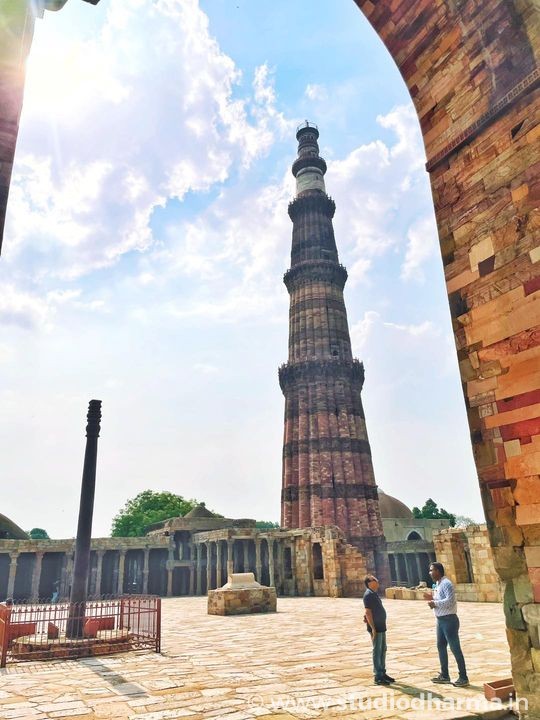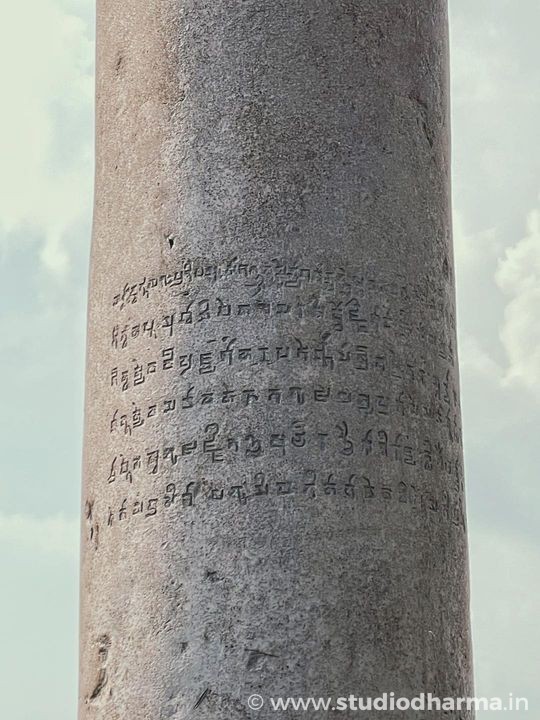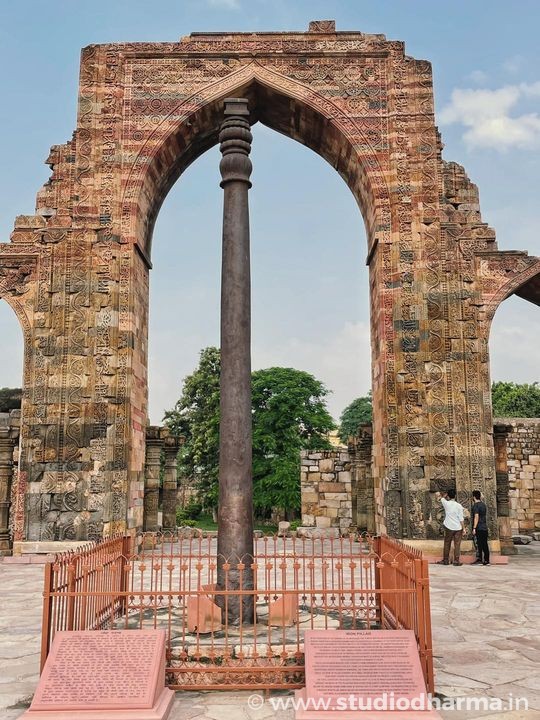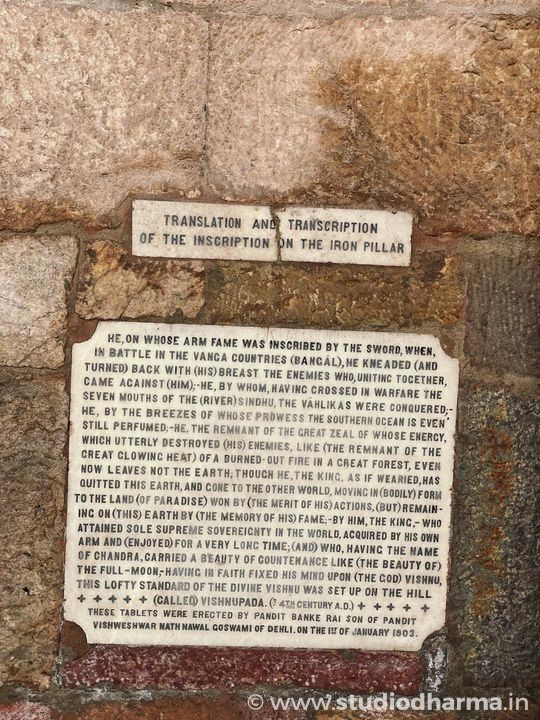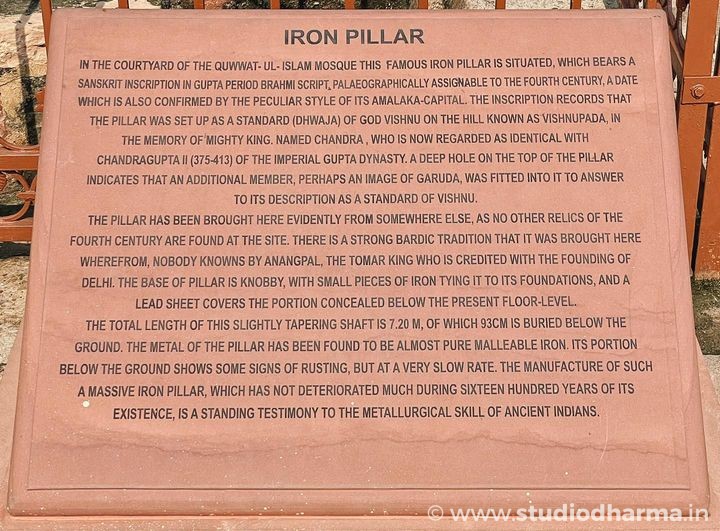THE IRON PILLAR AT QUTUB COMPLEX,DELHI.
THE IRON PILLAR AT QUTUB COMPLEX,DELHI.
The Iron Pillar of Delhi is a historical landmark that enchants everyone with its magnetic iron structure that has not rusted since its establishment over 1600 years ago. Despite being exposed to the elements, the Iron Pillar remains strong, serving as a remarkable illustration of scientific and engineering progress in ancient India. As a result, it has become one of the world’s oldest riddles, which archaeologists and material scientists attempt to answer.
Iron Pillar, which rises magnificently at 24 feet, is located within the Qutub Complex; it also houses the famed Qutub Minar. It is located in the Qutb Complex, just opposite the Quwwatul Mosque. The iron pillar is made of 6 tonnes of 98% wrought iron, which is said to be one of the reasons why it hasn’t rusted.
It was common for tourists to round the iron pillar with their backs to the pillar and their hand’s meeting. It is because it was considered that doing so would bring the person performing it good luck. But, as a result of this standard practice, the bottom half of the Iron pillar had a slight discolouration. The iron pillar is supposed to have a protective layer of passive rust on the iron that stopped the pillar from rusting; this layer washed off due to tourists’ continual touch and movement. As a result, a fence was placed around the pillar’s lower half in 1997 to prevent additional damage.
A look back at the Iron Pillar’s history reveals the year it was built and its purpose for it. But even though the history of Iron Pillar Delhi is still being researched and there are many different accounts of its genesis, it does provide us with some essential facts about Iron Pillar. An Indian antiquarian deciphered the inscriptions on the iron pillar in 1838, and these were later translated and printed in the Asiatic Society of Bengal’s Journal. Before it, nothing was known regarding Iron Pillar.
The Mehrauli Iron Pillar was built during the early Gupta dynasty (320-495 AD). This conclusion is based on the artistry style and writing on the pillar and the language. In the third stanza of an inscription on the iron pillar, historians discovered “Chandra,” which signifies Gupta Dynasty emperors. Furthermore, numerous historians disagree on whether Chandra refers to King Samudragupta (340-375) or his son, Chandragupta II (375-415). It is also thought to have been created in honour of the Hindu God Lord Vishnu.
There are also other ideas as to where the pillar was constructed. According to one popular theory, the Iron Pillar was erected on top of a hill in Madhya Pradesh called Udaygiri. After his victory, King Iltutmish (1210-36 AD) carried it to Delhi.
According to some experts, King Anangpal II, Tomar King, relocated and installed the Delhi Iron Pillar in the temple situated at Lal Kot in New Delhi about 1050 AD. Hence, it is mentioned in Iron Pillar Inscription. However, after King Prithviraj Chauhan, Anangpal’s grandson, Muhammad Ghori’s army was overthrown in 1191, Qutb-ud-din Aibak established Quwwat-ul-Islam mosque at Lal Kot. The pillar was then relocated from its original site to its present location in front of the mosque.
Qutub Minar
Google Location
Google Location
What's Your Reaction?








